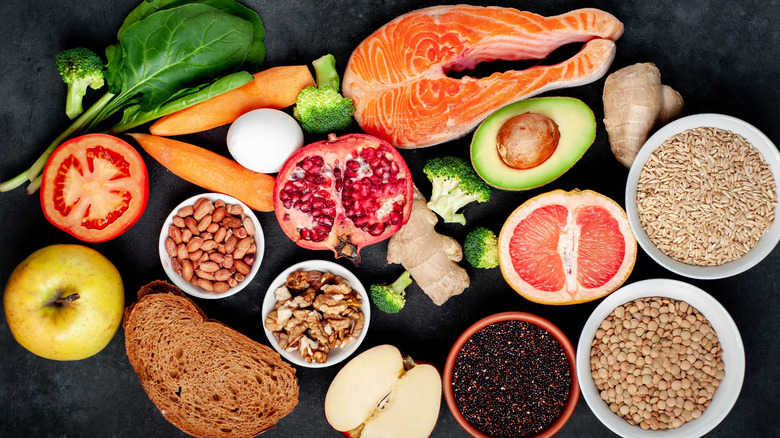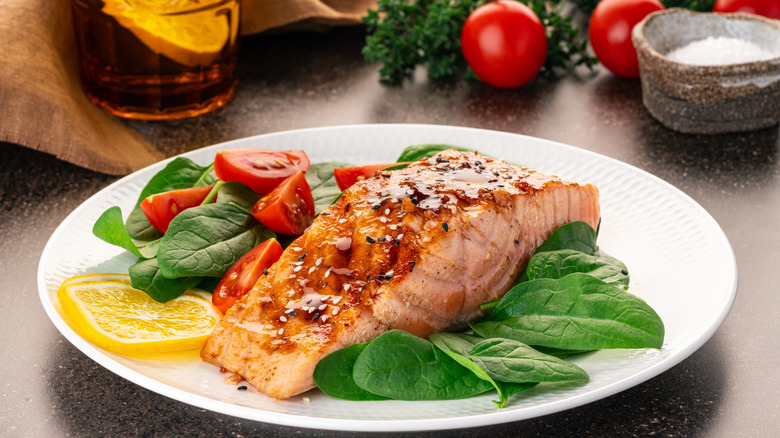The Truth About The Nordic Diet
Rich in fruits, vegetables, and lean protein, the Nordic diet is one of the healthiest ways of eating. This dietary pattern may lower bad cholesterol levels, reduce blood pressure, and protect against heart disease, reports a 2012 review published in Food and Nutrition Research. Moreover, it may decrease inflammation and improve glucose metabolism.
Like the Mediterranean diet, this eating plan is based on whole foods. Most meals consist of fatty fish, legumes, winter vegetables, berries, and nuts. Meat, poultry, and dairy products are used sparingly. As its name suggests, the Nordic diet is inspired by the eating habits of Denmark, Sweden, Norway, and other Scandinavian countries.
Also referred to as the New Nordic diet, this eating plan was developed in 2004 and has a strong focus on seasonal organic foods. At the same time, it supports sustainable farming practices and aims to reduce waste, according to a report published by the Ministry of Food, Agriculture, and Fisheries of Denmark. While it has nothing to do with Ikea's Swedish meatballs, it's anything but boring.
What is the Nordic diet?
Scandinavians are famous for their healthy lifestyle. They have a good work-life balance, exercise regularly, and cook their food at home. Cycling, for example, is an integral part of Danish culture. Children learn to bike from as early as age two, points out the Ministry of Foreign Affairs of Denmark.
The Nordic diet reflects this way of life. This dietary pattern promotes the consumption of seasonal foods, emphasizing quality over quantity. It's largely based on fish and seafood, whole grains, fruits, and veggies, with small amounts of meat and dairy. As Harvard Medical School notes, this eating style focuses on seasonal and regional produce — just like the Mediterranean diet.
Rich in fatty fish, the Nordic diet provides large amounts of Omega-3s, which support cardiovascular health. These nutrients may reduce inflammation, improve blood lipids, and lower your risk of sudden cardiac death, notes the Mayo Clinic. Canola oil, a staple of the Nordic diet, is high in monounsaturated fats, such as alpha-linolenic acid (ALA), says Harvard Medical School. Monounsaturated fats have been linked to a lower risk of coronary heart disease, stroke, and overall mortality, suggests a large-scale study featured in JAMA Internal Medicine.
Is the Nordic diet healthier than the Mediterranean diet?
The Nordic diet shares many similarities with the Mediterranean diet, but with a regional twist. As mentioned earlier, this eating pattern is based on foods specific to the Scandinavian region. The Mediterranean diet, by comparison, reflects the cuisine of France, Spain, Greece, and other countries in Southern Europe. For example, Scandinavians tend to use canola oil rather than olive oil.
"Both diets include moderate amounts of fish, eggs, and small amounts of dairy but limit processed foods, sweets, and red meat," says Dr. Frank Hu, Professor of Nutrition at Harvard T.H. Chan School of Public Health (via Harvard Medical School). A notable difference between the two is that Scandinavians eat lots of berries, which are widely available in the Nordic countries. These fruits are loaded with anthocyanins, a class of antioxidants that may prevent arterial stiffness and reduce blood pressure, notes Dr. Hu.
A 2018 study published in BMC Medicine reports that both diets may protect against type II diabetes. The Mediterranean diet was more effective at reducing the risk of myocardial infarction. Another study, which was published in The Journal of Nutrition, reports that a healthy Nordic diet may improve antioxidant status, insulin sensitivity, and blood lipids.
All in all, it's hard to say which diet is more healthful. The Nordic diet is relatively new, so it hasn't been studied as much as the Mediterranean style of eating. Both dietary patterns are healthier than the Western diet, which relies heavily on processed foods (the Cleveland Clinic).
What can you eat on the Nordic diet?
The Nordic diet is all about making healthy food choices. Think of it as a lifestyle. There's no need to count calories, order ready-made meals, or weigh your food. This dietary pattern encourages the consumption of local and seasonal produce, including:
- Root vegetables and leafy greens, depending on the season
- Whole grains, such as barley, rye, and oats
- Fresh fruit, especially berries
- Low-fat dairy
- Canola oil
- Nuts and seeds
- Fish in season, especially salmon, tuna, sardines, and cod
- Herbs and spices
Eat meat, poultry, eggs, and other animal products in moderation. Ideally, opt for free-range eggs and grass-fed meat. Try to get most of your daily calories from fatty fish, vegetables, and whole grains. Take the time to cook at home and experiment with new recipes inspired by Scandinavian cuisine.
Traditional Scandinavian foods are not widely available in the U.S., but you can still follow the principles of the Nordic diet. Visit the farmers' market more often, cut back on red meat, and eat organic produce whenever possible.



